

4/3/2025
Mastering 8-Ball Pool: A Complete Guide to Rules and Gameplay
8-ball pool is one of the most popular billiards games around the world. Played with 15 object balls and a cue ball, it's both strategic and exciting, making it perfect for casual players and seasoned pros alike. Here's a comprehensive guide to understanding the rules and getting started.
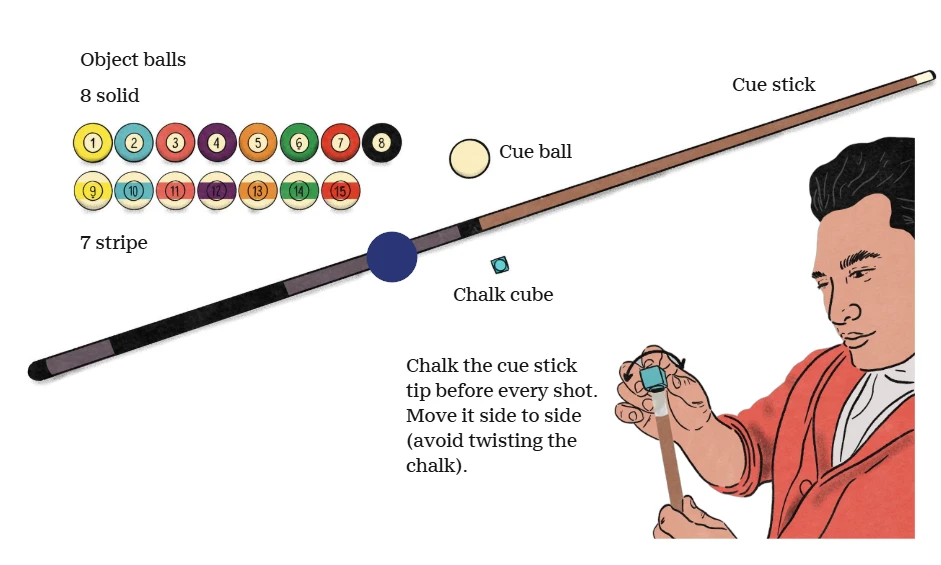
Setup
- 1. The Table: A rectangular pool table with six pockets.
- 2. Balls: The game consists of a cue ball (white) and 15 numbered object balls, divided into solids (1–7) and stripes (9–15), plus the black 8-ball.
- 3. Rack: The balls are arranged in a triangle rack, with the 8-ball in the center, one solid and one stripe in the bottom corners.

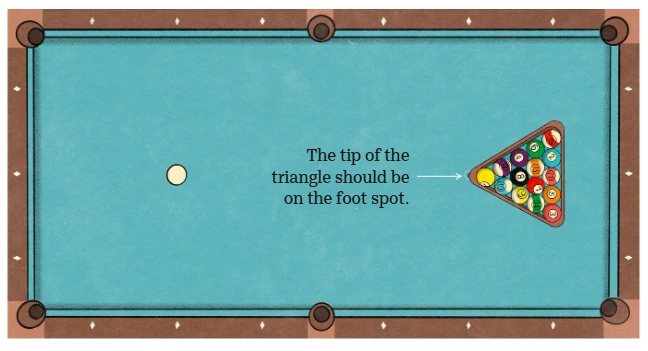
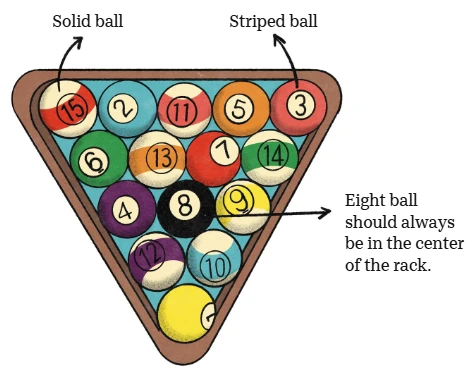
Basic Rules
- Objective: Sink all of your designated balls (solids or stripes) and finish by pocketing the 8-ball.
- Break: The game starts with a break shot. The player must either pocket a ball or drive at least four balls to the rail.
- Group Assignment: After the break, the first ball legally pocketed determines whether you are playing solids or stripes.
- Turn: Players take turns until they fail to pocket a ball or commit a foul.
More About The Break
To begin, decide which player will take the first shot, referred to as the "break." Position the cue ball on the head spot and aim to strike the triangle formation of balls to scatter them as much as possible. You can opt for a direct break or attempt it from an angle.
As per the American Poolplayers Association, a break is considered "legal" only if at least four balls touch the rails or if a ball is pocketed. If neither condition is met, the turn passes to the other player.
One side will play as stripes and the other as solids. For instance, if a player pockets a striped ball first, they’ll aim for stripes throughout the game. If both a striped and solid ball are pocketed during the same shot, the player gets to choose their group.
Gameplay
Throughout the rest of the game, one player competes as stripes while the other plays solids. Players take turns striking the cue ball to hit their designated balls, aiming to sink them into pockets. This continues until only the eight ball is left on the table.
Steer clear of the eight ball until it's the final target. Pocketing the eight ball before clearing all your designated balls results in an automatic loss, bringing the game to an abrupt end.
Remember, if you accidentally pocket one of your opponent’s balls, it works to their advantage and counts in their favor. Stay focused and aim with precision!
Winning the Game
After sinking all your assigned balls, your focus shifts to the eight ball. Declare the pocket you intend to sink the eight ball into, and aim exclusively for that pocket. Pocketing it elsewhere results in an automatic loss. If you miss, your opponent takes their turn as normal.

The Stance: Mastering the Cue Stick
Using a cue stick for the first time can feel unfamiliar, but it’s essential to learn the proper grip for accuracy and control. The simplest position to start with is the "open bridge." Rest your non-dominant hand on the table and cradle the cue stick's tip between your thumb and index finger. Meanwhile, your dominant hand guides the rear end of the stick. Alternatively, you can experiment with the "closed bridge," which involves securely wrapping your thumb and index finger around the cue stick.
To improve your aim and get comfortable, take a few practice strokes before striking the cue ball. This will help you refine your angle and familiarize yourself with the motion.
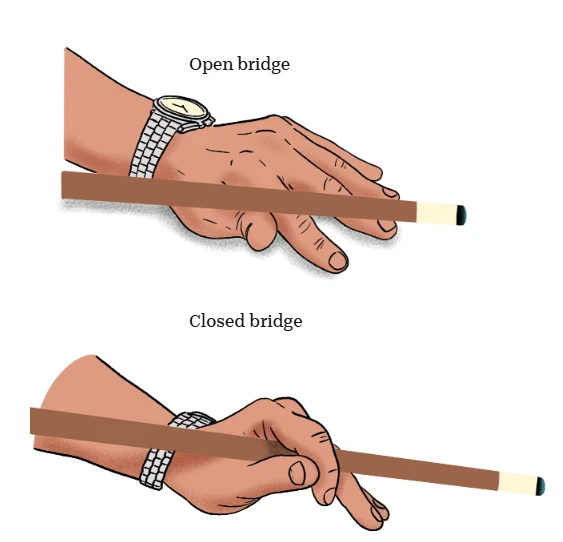
When the cue ball is positioned near the rail, using the standard stance can be challenging. In such situations, you can hold the cue stick at a steeper diagonal angle, almost vertically, to strike the ball effectively. Additionally, some bars or home tables provide a mechanical bridge, a useful tool for handling difficult shots with greater precision.
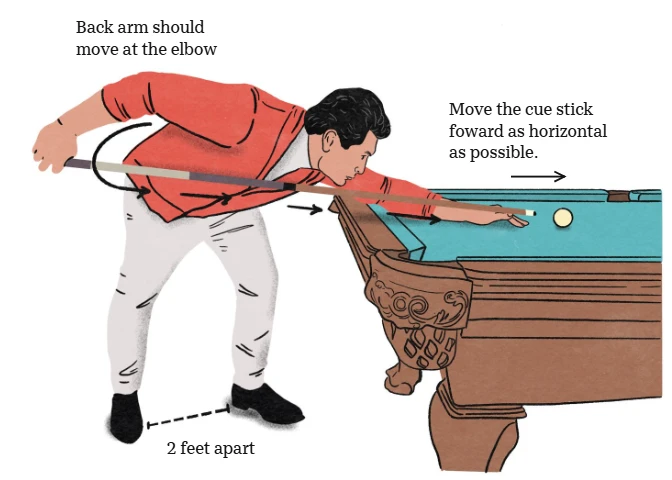
Fouls
- Hitting the cue ball off the table.
- Pocketing the cue ball (scratch).
- Failing to hit your designated group of balls first.
- Moving the 8-ball illegally or pocketing it prematurely.
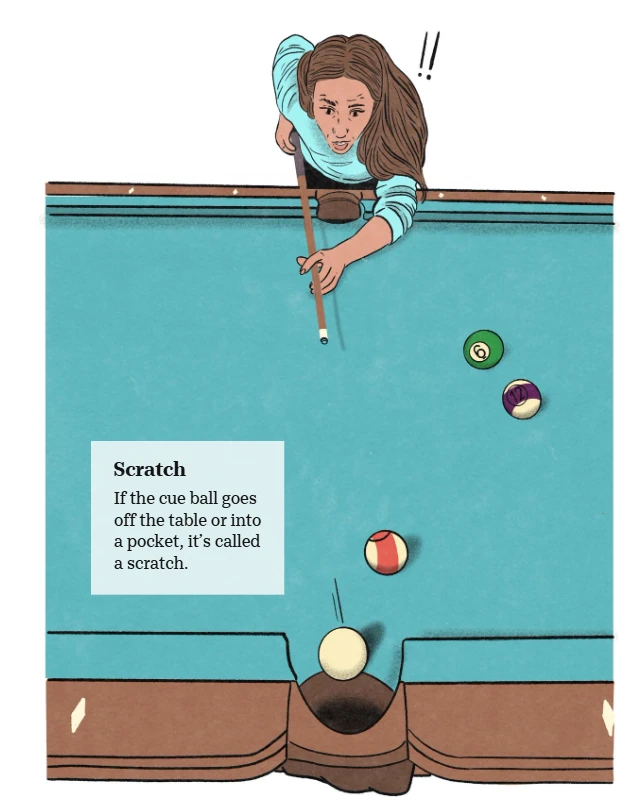
Penalty Option 1:
When a player scratches or commits a foul, their opponent gains the advantage of placing the cue ball anywhere on the table for their next shot. This allows them to set up an optimal position and strategy for gameplay.
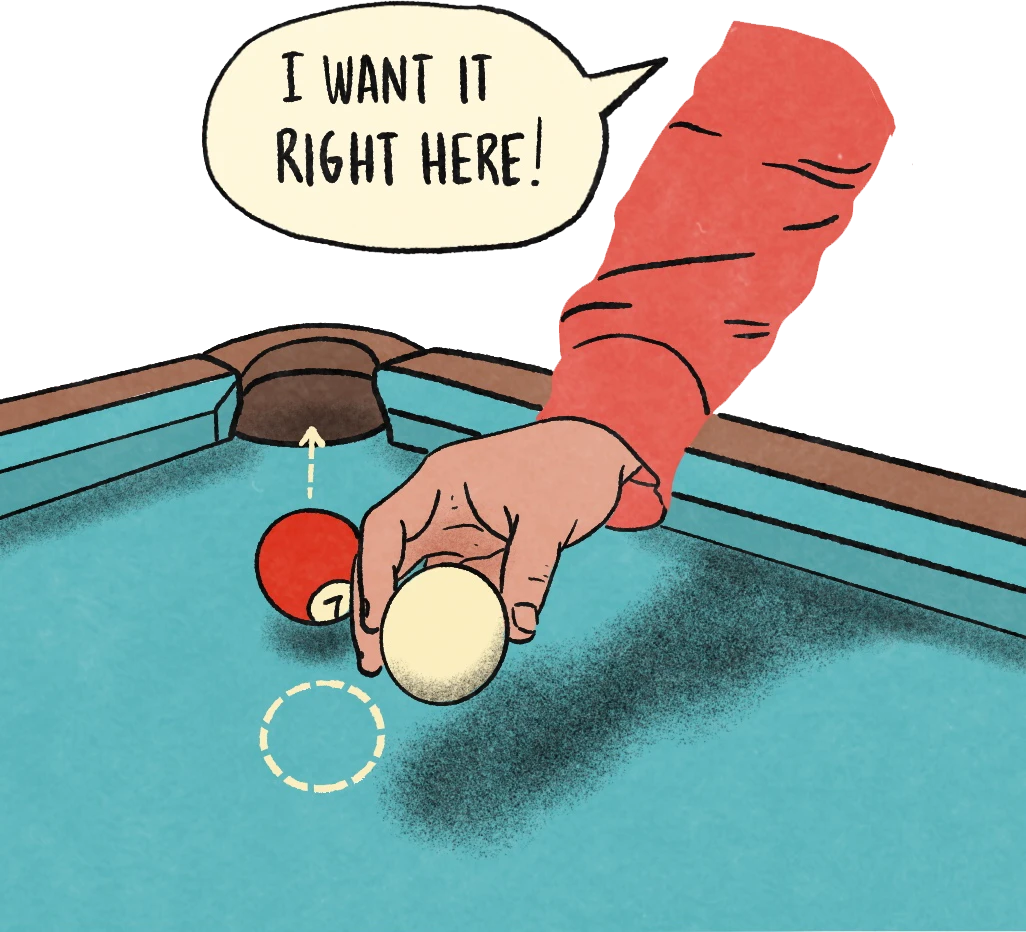
Penalty Option 2:
When a player scratches or commits a foul, their opponent is allowed to place the cue ball anywhere within the kitchen (the area behind the head string) for their next shot, setting up an advantageous position for their play.
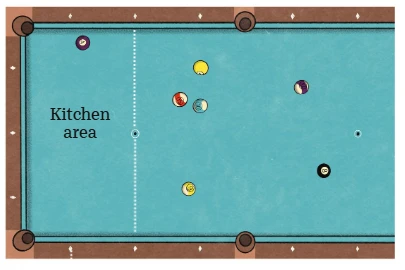
Winning the Game
- 1. Pocket all your assigned group of balls.
- 2. Sink the 8-ball into a called pocket without committing any fouls.
Strategy Tips
- Control the Cue Ball: Learn to position the cue ball for your next shot to maintain momentum.
- Play Defensively: Sometimes it's better to block your opponent's moves than go for risky shots.
- Master Spin: Use topspin, backspin, and sidespin to enhance your control over shots.
With practice and focus, you'll be pocketing balls like a pro in no time! If you'd like to explore advanced strategies or techniques, let me know—I’m here to help.

